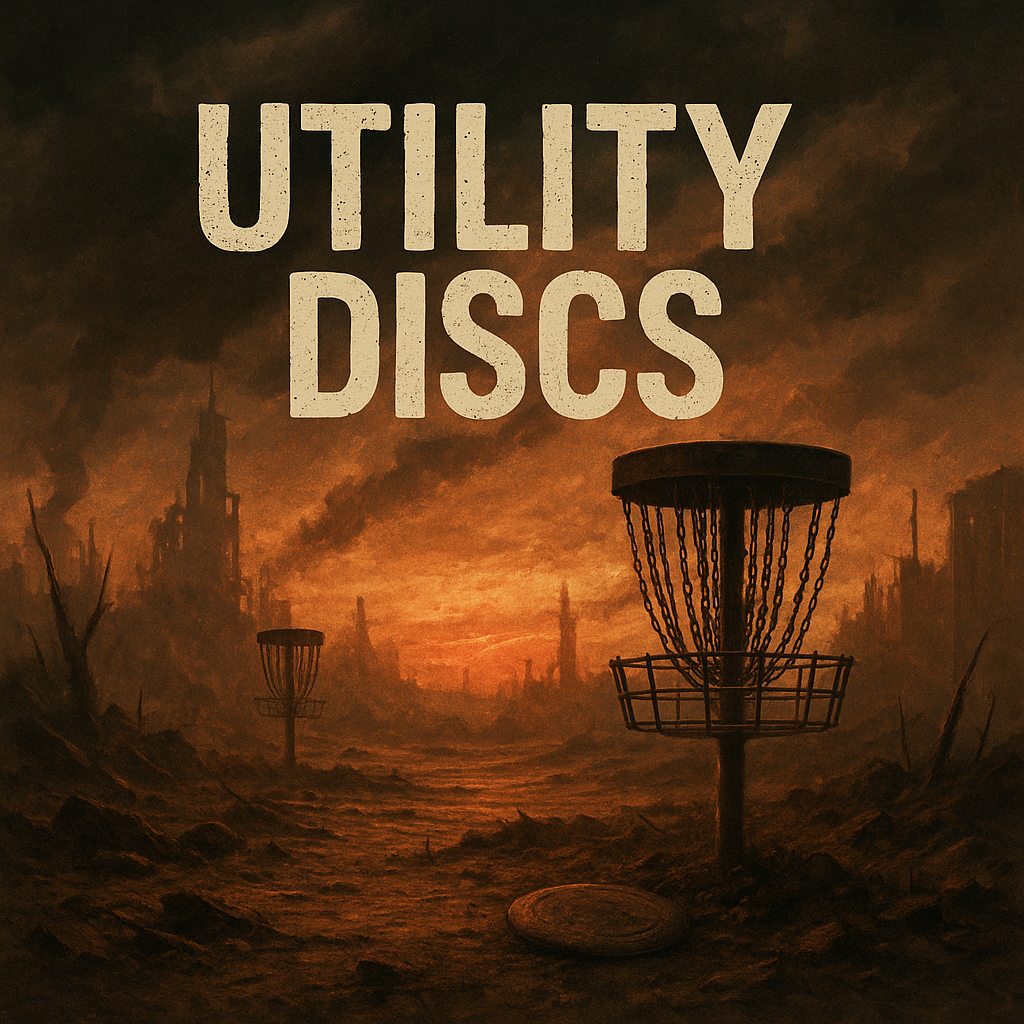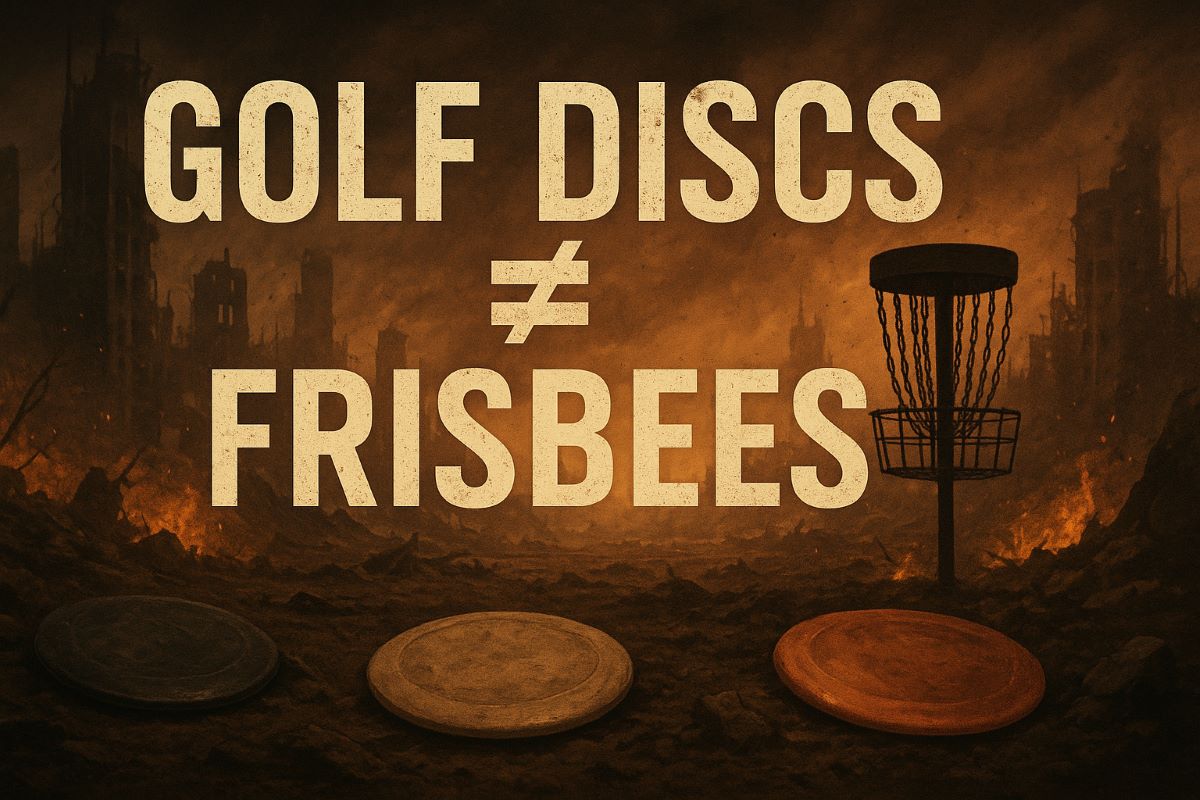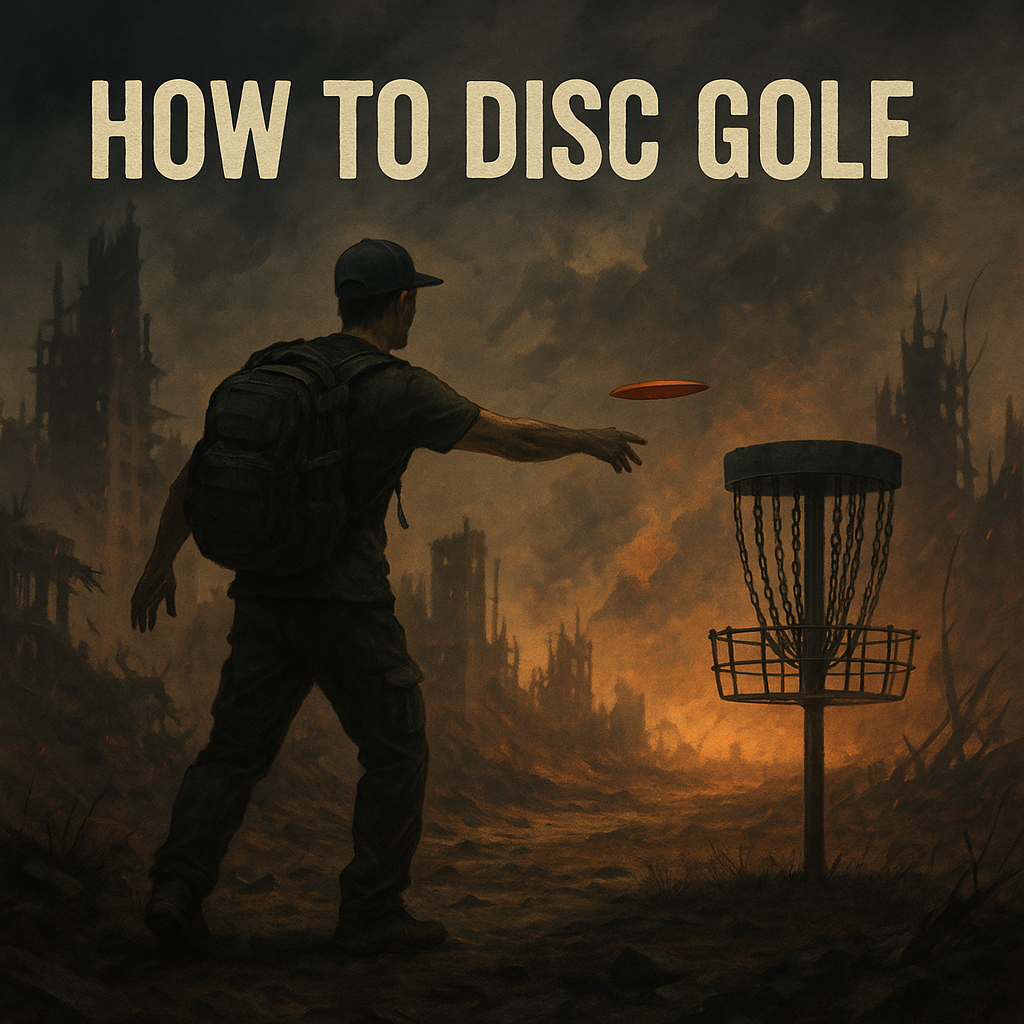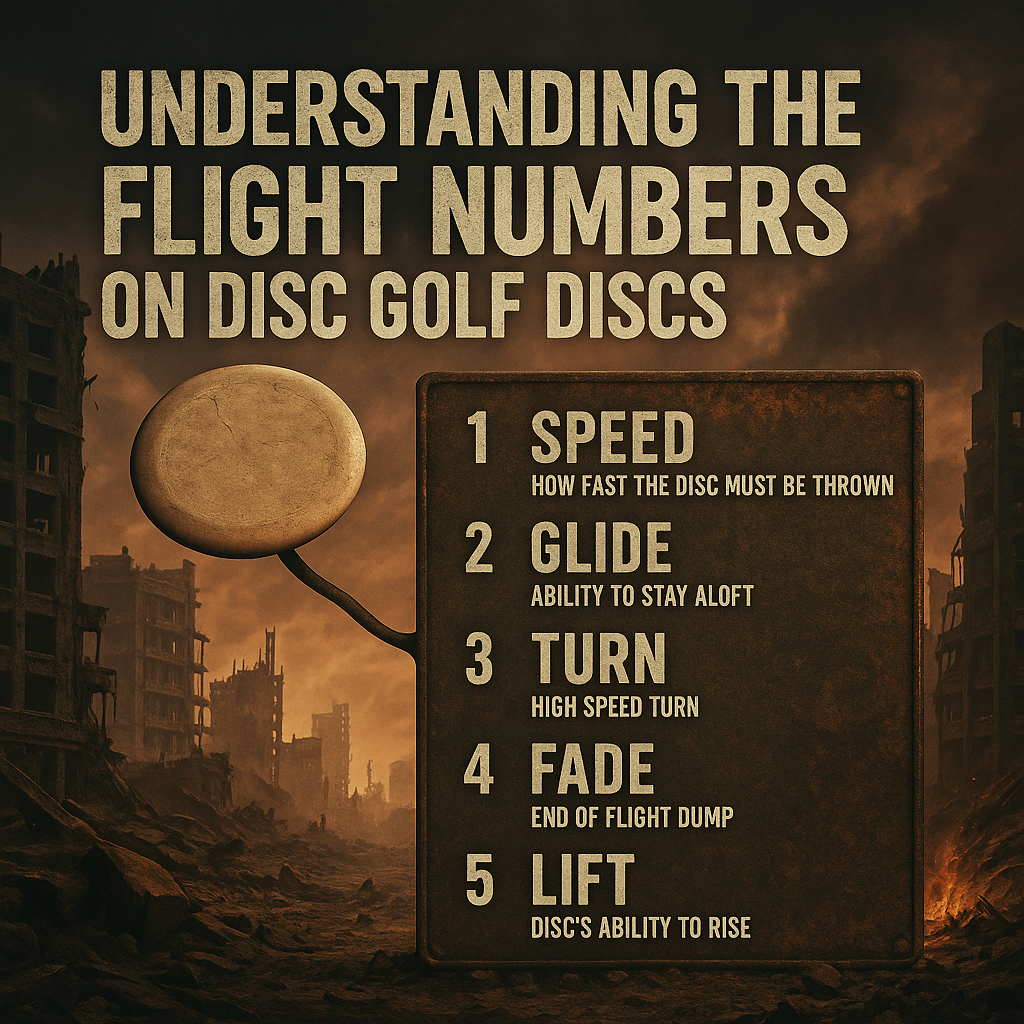Angles for the End of the World
When the cities fall and the fairways are littered with ash instead of leaves, the difference between a hyzer and an anhyzer won’t be trivia — it will be survival. These aren’t just throwing angles. They’re two ways of bending your disc, and your fate, through the wasteland air.
Hyzer: The Reliable Fade
Imagine a blade that always swings back toward you. That’s the hyzer. For a right-hand backhand, you tilt the top of the disc away from yourself at release. Gravity and disc stability take over, pulling it low and left. The more you angle it, the sharper the dive.
Hyzer is the workhorse of the apocalypse. It cuts through wind, powers through obstacles, and lands with predictable obedience. When you have one chance to skirt the edge of a crumbling bunker, hyzer is the angle that comes home — if anything does.
Common Hyzer Uses
- Low Fade Approaches: Skim under hanging branches or collapsing structures. Ultra reliable.
- Wind Fighting: Battle headwinds with an overstable disc that still fades hard.
- Skip Shots: Use the ground like a weapon, bouncing toward the target.
- Hyzer Bomb: With a very overstable disc, like the Apocalypse, the hyzer bomb climbs almost straight up and then drops nearly vertical, with minimal left or right drift. In the wasteland, this is one of the most reliable and predictable shots you can throw — a precision strike from above when you can’t afford a miss.
Anhyzer: The Defiant Turn
Anhyzer is the rebellion. Instead of leaning the disc away from you, you tilt the top end toward your body at release. For a right-hand backhand, this sends the disc bending to the right — sometimes gliding so long you wonder if it’ll ever come back. Often, it won’t.
With an understable midrange like the Flat Earth, the disc will hold the anhyzer angle almost the entire flight, smoothly continuing in the release direction with only a slight pan out before landing.
With an overstable driver like the Plague, the disc’s natural hyzer flight will eventually overpower the anhyzer angle as it slows down, causing it to fade out. A higher, more nose-up release gives the disc more time in the air to drift before fading. This can be invaluable when you need an S-curve — turning around a single obstacle, or someone in your way — before finishing toward the target.
In the ruins, anhyzer is your way of slipping past barricades, curving into hidden baskets, and outsmarting the terrain. It’s less predictable, more dangerous, and in the wrong hands, it turns into a wounded duck limping to the ground. But when thrown right, it’s a ghost through the trees.
Common Anhyzer Uses
- Turning Drives: Shape shots around collapsed towers and thick forest lines.
- Glide for Distance: Let an understable disc ride the turn into enemy territory.
- Escape Lines: When straight or left won’t work, bend right like a shadow slipping away.
- Flex Shot: Turn right and then left with an overstable disc released at an Anhyzer Angle
Choosing Your Angle When the Sky Falls
Hyzer is steady. Anhyzer is cunning. You can survive with one, but you’ll thrive with both. In the wasteland, there’s no room for single-minded throwers. Learn the difference. Feel the difference. In time, you’ll release the right angle without thinking — muscle memory forged in desperation.
Because when the air tastes of smoke and the fairway is closing in, you won’t have time to ask yourself, “Hyzer or anhyzer?” You’ll just throw… and hope it’s the right call.









